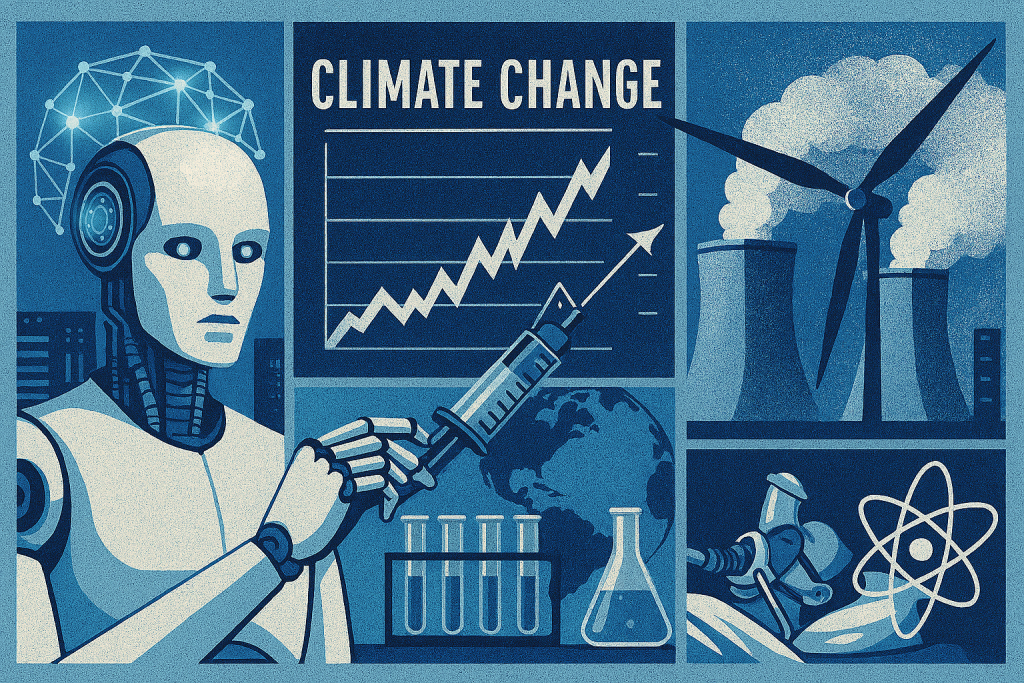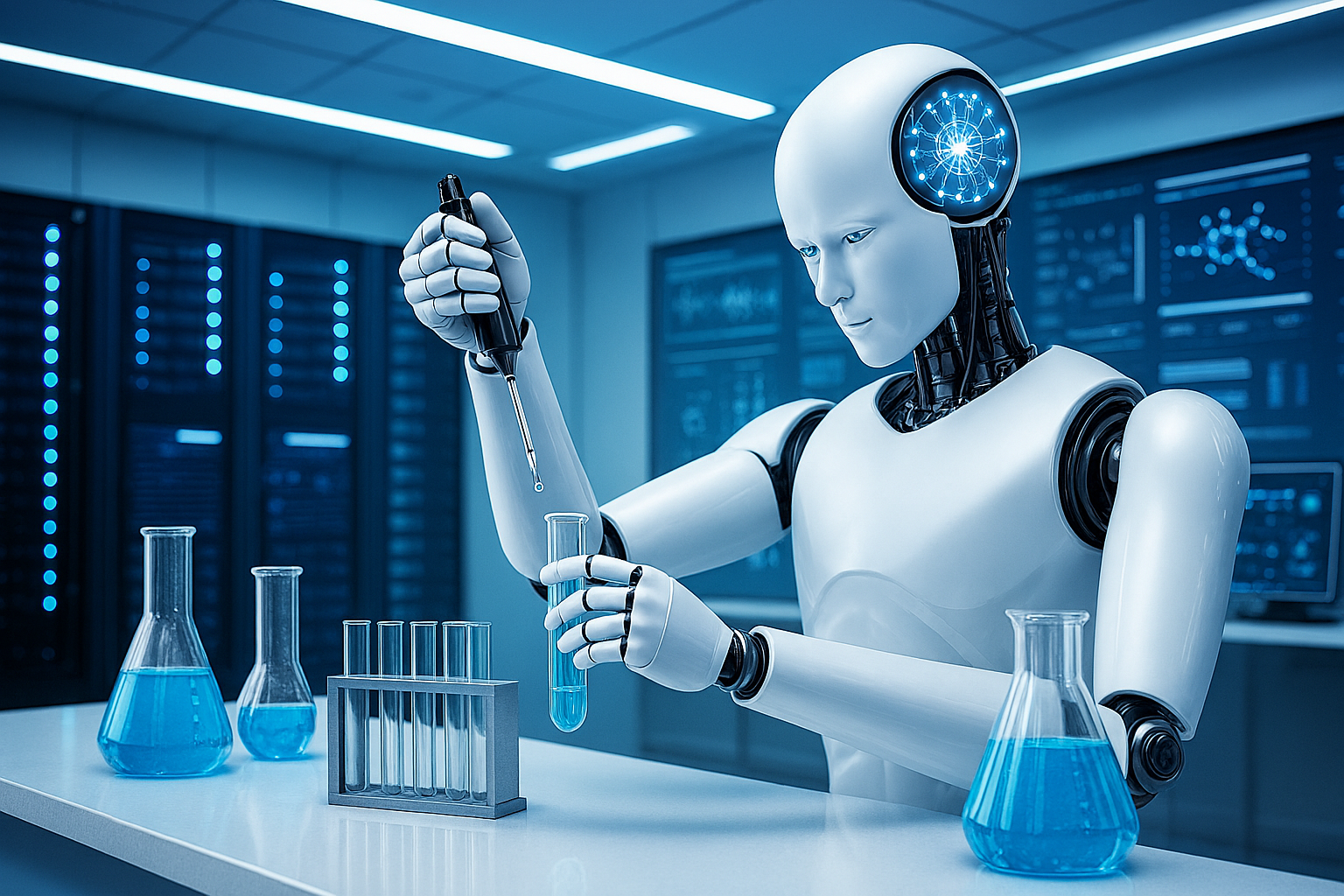Simulated Salvation or Technocratic Theater? AI Supercomputers to Cure Cancer: In a move that echoes the urgency of the Manhattan Project, the U.S. Department of Energy (DOE) has announced a $1 billion investment into two AMD-powered AI supercomputers—Lux and Discovery—designed to tackle humanity’s hardest problems. Their flagship promise? Simulating cancer treatments at national-lab scale and compressing years of drug development into mere weeks.

🧠 Core Claims from the DOE Announcement
Energy Secretary Chris Wright claims these machines could help turn many cancers from terminal to manageable conditions within five to eight years. But beneath the glossy press release lies a deeper question: Can exascale AI actually solve biology, or is this just another chapter in the long history of centralized science overpromising and underdelivering?
Here’s the distilled essence of what the Department of Energy is pitching:
💰 Investment & Infrastructure
- $1 billion public-private investment into two AMD-powered AI supercomputers: Lux and Discovery.
- Lux arrives in early 2026, built rapidly via a new partnership model.
- Discovery lands in 2028, via traditional procurement, with performance exceeding Frontier (currently #2 globally).
🧬 Medical Moonshot
- Cancer simulation is the flagship use case.
- Energy Secretary Chris Wright claims these machines could help transform terminal cancers into manageable conditions within 5–8 years by compressing drug/treatment simulation timelines from years to weeks.
⚛️ Scientific Scope
- Beyond cancer, the systems will tackle:
- Fusion energy
- Nuclear weapons simulations
- Materials science
- Quantum research
- Climate modeling
- Advanced manufacturing
- Grid modernization
This is framed as a Manhattan Project 2.0 — a national security and scientific supremacy play, not just chatbot hype. This is the perfect setup for a teardown that asks:
Is this about solving problems, or just rendering them in higher resolution?
Is this moonshot realism or marketing theater?
Can exascale AI actually simulate biology at a level that meaningfully accelerates cancer breakthroughs?
Is the timeline plausible, or is this just computational optimism dressed up for political wins?
What does “public-private partnership” really mean in terms of control, access, and accountability?
The DOE’s $1B AI supercomputing moonshot hinges on a seductive but flawed premise: that simulation can replace the messy, unpredictable, and often inconvenient reality of biology. But as history—and recent global events—have shown, centralized techno-science without transparency is a recipe for distortion, not discovery.
🧬 The Simulation Mirage: Why Biology Doesn’t Obey Code
The DOE’s claim that Supercomputers Lux and Discovery will “compress years of cancer research into weeks” via AI simulation is rooted in a seductive narrative: that if we just throw enough compute at biology, we can brute-force our way to cures. But here’s the catch:
- AI models are only as good as the data they’re trained on. And in biology, that data is often incomplete, biased, or context-dependent.
- Biological systems are not deterministic. The same treatment can yield wildly different outcomes across individuals due to genetics, microbiome, environment, and epigenetics.
- Simulations don’t discover—they interpolate. They can’t predict what hasn’t already been observed and encoded. That’s why real-world trials—in animals, humans, and diverse populations—remain the gold standard.
Even in drug discovery, where AI has shown promise in identifying molecular candidates, experimental validation remains essential. As one AZoLifeSciences review put it: “AI is not a panacea for all medical challenges; it is a tool that must be carefully developed, validated, and deployed”.
The Reality Check:
- AI in oncology today is mostly used for:
- Pattern recognition in imaging (e.g., radiology, pathology)
- Predictive modeling for treatment response
- Drug candidate screening (e.g., AlphaFold for protein folding)
- But simulation ≠ validation. AI can suggest hypotheses, but real-world trials remain essential. Biological systems are nonlinear, context-sensitive, and often defy prediction. For example:
- A drug that works in a mouse model may fail in humans due to immune system differences.
- Tumor microenvironments vary wildly between patients, affecting drug efficacy.
- Data limitations: AI models require massive, high-quality, diverse datasets. Yet:
- Clinical trial data is often siloed or proprietary.
- Minority populations are underrepresented in biomedical datasets, skewing predictions.
- Biological variability and unknowns (e.g., epigenetics, microbiome interactions) are hard to model.
Bottom Line: AI Supercomputers can accelerate hypothesis generation, but it cannot replace the empirical unpredictability of biology.

🧪 The COVID Precedent: A Case Study in Centralized Science and Simulation Overreach
The pandemic response offers a cautionary tale. The rush to deploy mRNA vaccines—hailed as a triumph of computational biology—was accompanied by:
- Suppression of dissenting scientific voices, as seen in the Yale-led study on post-vaccination syndromes that was politicized before peer review.
- Conflicts of interest and opaque decision-making, highlighted by the restructuring of the CDC’s vaccine advisory panel amid accusations of bias.
- Emerging evidence of harms, including a 2025 compilation of 700+ peer-reviewed studies raising concerns about spike protein toxicity, biodistribution, and immune imprinting.
The pandemic response offers a real-world example of what happens when simulation, centralized control, and political urgency override scientific pluralism:
- mRNA vaccines were developed using AI-assisted protein modeling and rapid prototyping. While this was a technical feat, it came with:
- Accelerated timelines that compressed typical safety testing phases.
- Suppression of dissenting voices, including researchers raising concerns about myocarditis, menstrual irregularities, and long-term effects.
- Opaque data practices, with limited access to raw trial data for independent verification.
- Simulation-driven policy (e.g., epidemiological models predicting death tolls) was used to justify sweeping mandates—many of which were later walked back or contradicted by real-world data.
- Post-vaccine surveillance has revealed signals of adverse events, but critics argue that centralized agencies were slow to acknowledge or investigate them, citing political pressure and conflicts of interest.
Lesson: When AI Supercomputers and simulation are used to justify real-world interventions, the stakes are enormous. Without independent validation, transparency, and dissent, the risk isn’t just scientific error—it’s systemic harm.

🏛️ AI at the Lab Bench: Tool or Trojan Horse?
The DOE’s framing of Supercomputers Lux and Discovery as “Manhattan Project 2.0” machines is telling. These aren’t just research tools—they’re instruments of national strategy, built to serve “federal interests” and “shared innovation” with private partners.
The DOE’s new public-private model promises “shared innovation,” but the details matter:
- Who owns the data? Will independent researchers have access to the models, training data, and outputs?
- Who audits the simulations? Without external validation, simulated “breakthroughs” could be used to fast-track treatments without adequate scrutiny.
- What’s the incentive structure? With AMD and HPE as partners, is this about science—or market capture?
In a world where AI-generated outputs can be manipulated, misinterpreted, or politically weaponized, the risk isn’t just scientific error—it’s technocratic overreach masquerading as progress.

🧨 Modeling Mistakes: When AI Gets It Wrong in High-Stakes Domains
Lux and Discovery aren’t just being pitched as cancer solvers—they’re being positioned as national-lab workhorses for fusion energy, nuclear weapons simulations, materials science, climate modeling, and infrastructure modernization. But when AI models are trained on half-truths, politicized narratives, or outright misinformation, the consequences aren’t just academic—they’re existential.
☢️ Nuclear Weapons: Precision or Propaganda?
Simulating nuclear detonations, yield estimates, and fallout patterns requires extreme precision. But:
- AI models can amplify errors if trained on incomplete or biased historical data.
- False confidence in simulations could lead to miscalculated deterrence strategies or misinformed arms control policies.
- Centralized control over simulation outputs raises red flags about transparency and international trust—especially when geopolitical tensions are high.
In a worst-case scenario, flawed modeling could be used to justify escalatory postures or downplay risks of new weapons systems, all under the guise of “AI-verified” science.
🌍 Climate Modeling: When Consensus Becomes Dogma
DOE claims these supercomputers will accelerate climate modeling. But the climate debate is already riddled with politicized science—especially around carbon dioxide:
- CO₂ is not a pollutant in the traditional sense—it’s a naturally occurring gas essential to plant life. Yet it’s often framed as a toxic threat in public discourse.
- Climate models are notoriously sensitive to assumptions, and many rely on speculative feedback loops or worst-case emissions scenarios that haven’t materialized.
- AI trained on biased datasets or activist-driven narratives could reinforce alarmist projections, driving policy based on fear rather than empirical nuance.
If Lux and Discovery become the new arbiters of climate “truth,” we risk replacing open scientific debate with centralized simulation outputs that are taken as gospel—no questions asked.
🏗️ Infrastructure and Grid Modernization: Fragility by Design?
Modeling infrastructure resilience, energy grid behavior, and advanced manufacturing processes sounds promising—until you realize:
- Real-world systems are chaotic and context-dependent. A model that works in one region may fail catastrophically in another.
- Overreliance on simulation can mask fragility, especially when edge cases and black swan events are excluded from training data.
- Centralized AI control over infrastructure planning could lead to brittle systems optimized for theoretical efficiency but vulnerable to real-world stressors.
🎯 Public Warning: AI Is Not the Oracle—It’s a Mirror
When simulations are treated as empirical truth, we don’t just risk scientific error—we risk systemic delusion. AI doesn’t discover—it reflects. And if the inputs are flawed, the outputs become dangerous.
Lux and Discovery may be powerful. But without transparency, dissent, and empirical validation, they’re not solving problems—they’re rendering them in higher resolution.

🥜 Final Nut: When Machines Model the Future, Who Models the Machines?
Lux and Discovery are not just supercomputers—they’re symbols of a dangerous shift: the outsourcing of human judgment to machine learning models trained on incomplete data, politicized narratives, and institutional bias. When simulations become scripture, we don’t just risk bad science—we risk rewriting reality to fit the model.
This isn’t just about cancer. It’s about letting centralized, opaque systems dictate the trajectory of humanity’s most critical domains:
- Biology, where unpredictable responses defy deterministic modeling.
- Climate, where politicized assumptions masquerade as settled science.
- Infrastructure, where brittle systems are optimized for theoretical efficiency, not real-world resilience.
- Weapons, where simulation errors could trigger catastrophic miscalculations.
We’ve already seen the cost of simulation-driven policy during COVID-19: dissent suppressed, data manipulated, and interventions justified by models that couldn’t predict reality. Now, the same logic is being scaled to national security, energy, and medicine—with even less transparency.
AI doesn’t understand truth—it reflects what it’s fed. And when the inputs are curated by centralized institutions with political agendas, the outputs become tools of control, not discovery.
So here’s the final warning:
If we let machine learning models dictate our future, we’re not advancing science—we’re surrendering it.
Human progress demands friction: debate, dissent, and empirical messiness. Lux and Discovery may simulate faster, but they cannot think deeper. That’s our job. And we must not outsource it.
Any questions or concerns please comment below or Contact Us here.
- Stanford’s AI Experts Predict 2026: From Evangelism to Evaluation
- “Trump’s U.S. Tech Force-Innovation or Bureaucracy in Disguise?”
- Drone Swarms, AI, and the March Toward Automated Control: A Warning for Humanity
- Federal Power Grab: Trump Moves to Override State AI Regulations
- Robotics, AI, & the New Trump Industrial Policy



Leave a Reply